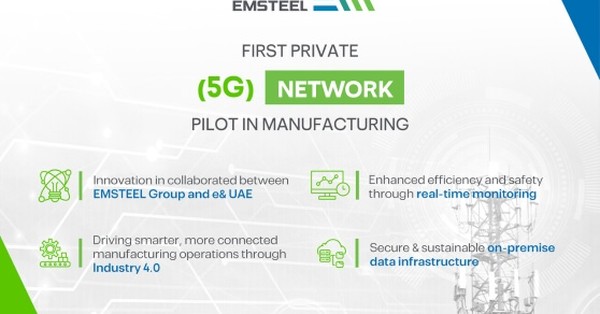T-Mobile 5G-Advanced Edge: Edge Control and T-Platform Explained
T-Mobile US expanded its Advanced Network Solutions portfolio with Edge Control and T-Platform, aiming to deliver private network-like performance over its nationwide 5G-Advanced footprint while simplifying how enterprises deploy, govern, and scale edge workloads.
Edge Control: Local Breakout and Deterministic Latency on 5G-Advanced
Edge Control enables cellular traffic to exit locally and flow directly into an enterprise’s edge compute environment, rather than traversing centralized cores or the public internet. By combining distributed user plane functions, policy-based traffic steering, and on-net interconnects to enterprise MEC, the service reduces network hops and cuts latency into the low tens of milliseconds for applications that need deterministic performance and data locality.
The design is deliberately hyperscaler- and hardware-agnostic. Enterprises can anchor traffic to on-premises MEC or regional edge zones from providers such as AWS, Microsoft Azure, or Google Cloud without requiring per-site private core deployments. For organizations testing private 5G but wary of site-by-site complexity, Edge Control offers a pragmatic middle path: public 5G Standalone with local breakout and enterprise-grade policy control.
T-Platform: Unified Edge and 5G Policy, Orchestration, and KPIs
T-Platform is T-Mobile’s customer portal for managing business services, including Edge Control. It consolidates provisioning, monitoring, policy, and performance views across connectivity, edge workloads, and supported enterprise services. The intent is to provide a single operational fabric where IT and OT teams can orchestrate traffic steering rules, integrate identity and security policies, and track KPIs tied to application outcomes.
How Edge Control Compares to Traditional MEC and Private 5G
Traditional MEC offers low-latency access to hyperscaler edge zones but often relies on internet or backhaul paths that add jitter and sovereignty concerns. Private 5G delivers strong control but demands per-site radios, core software, lifecycle management, and skills. Edge Control blends public 5G SA, distributed UPF, and local breakout to approximate private performance while keeping infrastructure overhead and deployment timelines in check.
Why 5G-Advanced Edge Control Matters for Enterprises Now
Enterprises need lower latency, tighter data control, and simpler operations to unlock Industry 4.0 use cases without committing to multi-year private network rollouts at every location.
Public 5G SA with Private-Like Performance and Control
With 5G SA widely deployed, carriers can expose features such as traffic classification, session anchoring, and QoS enforcement that were once the domain of private networks. Edge Control operationalizes these capabilities, providing near-site processing and deterministic paths for workloads like machine vision, AR-guided workflows, and latency-sensitive VDI.
Latency, Data Sovereignty, and Compliance Drivers
Healthcare, manufacturing, and defense customers face strict data-handling requirements and cannot rely on best-effort internet paths. Local breakout keeps traffic on-net and closer to origin, supporting data residency, reduced exposure, and auditability. It also helps remote and field employees connect to enterprise resources with fewer overlays, minimizing reliance on VPNs while enabling Zero Trust controls.
Competitive Landscape: Verizon, AT&T, and T-Mobile Differentiators
Verizon has long paired mobility with AWS Wavelength for MEC, and AT&T partners with Azure and Google on edge solutions. T-Mobile is differentiating on two fronts: a 5G-Advanced, Standalone-first network and an agnostic approach to edge compute partners. If T-Mobile sustains footprint-wide availability and consistent performance, it could close gaps in the enterprise segment where it historically trailed incumbents.
Architecture and 3GPP Release 18 (5G-Advanced) Context
The launch aligns with 3GPP Release 18 (5G-Advanced) capabilities that enhance the edge-to-core continuum for performance, control, and observability.
5G-Advanced Enablers: Distributed UPF, Slicing, NWDAF, RAN Intelligence
Distributed UPF placement enables local breakout near enterprise sites, while policy control and network slicing provide traffic separation and guaranteed QoS for critical applications. Enhanced analytics via NWDAF and RAN intelligence supports smarter routing and anomaly detection. These features, combined with carrier-grade security and lawful intercept compliance, make public 5G a viable platform for mission-critical workloads.
Interconnects and Multi-Cloud Edge Alignment
The ability to steer traffic to multiple edge environments mitigates vendor lock-in and supports multi-cloud strategies. For brownfield estates, Edge Control should integrate with existing SD-WAN and SASE stacks so enterprises can preserve policy consistency across fixed and mobile underlays. Expect tighter API exposure over time, potentially aligning with industry efforts like GSMA’s CAMARA for programmable network features.
Early Beneficiaries and High-Impact 5G Edge Use Cases
Organizations with distributed sites, strict data policies, and latency-sensitive workflows will see the earliest gains from local breakout over public 5G.
Healthcare: On-Prem Imaging, Remote Care, Connected Devices
On-premise processing for imaging review, remote consultations, and connected medical devices can reduce exposure to the public internet while meeting response-time targets for clinicians. Field staff can securely access records and apps without heavy VPN dependencies, improving experience and reliability.
Manufacturing and Logistics: Machine Vision, AGVs, Digital Twins
Machine vision for quality inspection, AGV coordination, and digital twins benefit from deterministic uplink, tight jitter bounds, and on-site compute. Edge Control allows plants to start with public 5G and scale to private where needed, preserving a consistent policy model via T-Platform.
Defense and Public Sector: Secure, Local Edge Processing
Local processing supports operational security and continuity for bases, depots, and incident response. For remote workers, breakout closer to the point of use reduces backhaul delays and can improve application responsiveness for GIS, video, and secure collaboration.
What to Watch and Next Steps for Evaluation
Enterprises should validate how Edge Control and T-Platform fit into their network, security, and cloud roadmaps before wide-scale deployment.
Procurement Checklist and SLA Requirements
Request latency, jitter, and packet loss objectives per workload; clarify slice availability, geographic coverage, and failover behavior; and align on data residency assurances. Ensure observability metrics are accessible via APIs and exportable to existing ITOM and SIEM tools.
Integration Steps and Pilot Design
Map application flows and required breakout locations, integrate identity and Zero Trust policy, and test interoperability with SD-WAN/SASE. Start with two to three high-impact use cases—machine vision, AR-assisted maintenance, secure VDI—and benchmark against current-state networks to quantify ROI.
Open Questions: Coverage, APIs, Roaming, Pricing
Watch for cross-region performance consistency, roadmap for deeper API programmability, roaming and interconnect handling for local breakout, and pricing models that scale across dozens or hundreds of sites. If T-Mobile executes here, Edge Control plus T-Platform could become a credible alternative to per-site private deployments for many enterprises.








































